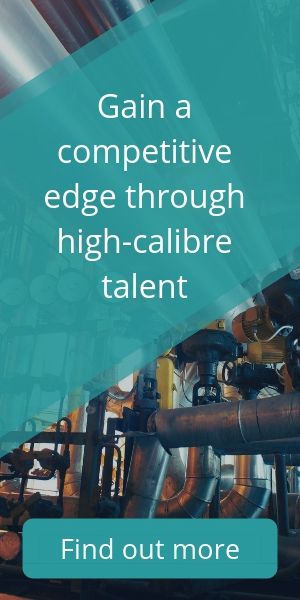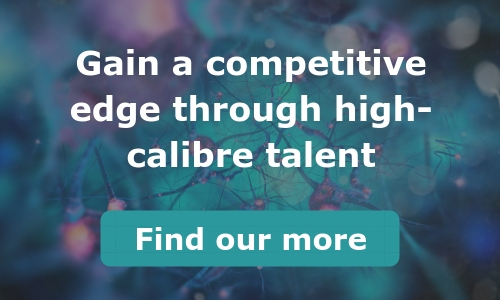Finding, hiring, and onboarding the right talent can be exhausting, especially if you’re not monitoring the process. Hiring metrics are one of the best ways to keep aware of where your current methods are succeeding or failing, and draw attention to how you can improve. Without the right hiring metrics in place, it becomes impossible to keep your talent acquisition strategy as efficient as possible.
Below, we’ve listed our top 7 hiring metrics that you need to focus on:
- Attrition & Retention Rates
- Candidate Experience
- Quality of Hire
- Brand Awareness
- Sourcing Channels
- Offer Acceptance & Open to Fill Rates
- Time to Hire
Keep reading as we explore why these hiring metrics are essential for your talent acquisition team!
Attrition & Retention Rates
First things first, there’s no point trying to hire more people if your current talent are leaving left, right, and centre. This is exactly why Attrition & Retention rates are one of the most important hiring metrics you can monitor.
Think of it this way, if your bathtub had a leak would you fix the leak first, or just keep adding more water? Managing the talent in your business works in just the same way. Keeping track of your attrition rates helps you spot if there are any deeper problems in the business that you need to tackle. This could include problems with your internal culture, or with how responsibilities are managed over time.
Once these are dealt with, you will start to see that your employees are staying longer, and productivity may even improve.
Candidate Experience
One of the biggest metrics we champion as a talent consultancy is good candidate experience. This includes a range of things, such as:
- Time to hire
- Communication
- Feedback
But why is candidate experience a good hiring metric?
Because it can be the deciding factor between offers from two businesses. If one business treats a candidate with respect, provides clear communication, and handles the hiring process in a timely manner, they’re far more likely to win the candidate. Too many companies waste time deciding on their ‘perfect’ choice, and how much to offer. By the time a decision has been made, the ‘ideal’ candidate has already received and accepted a competing offer.
Of course, even if an applicant is unsuccessful it’s still best practice to maintain a positive candidate experience. Just because someone isn’t joining your team right now doesn’t mean they won’t in the future. A connection of theirs might even be the perfect fit for your business, but don’t apply due to a negative conversation around your business.
Quality of Hire
The quality of your hire encompasses different elements, such as skillset, diversity, and attitude.
Each of these traits are critical to improving your business, and making it an attractive work environment. The better your work environment, the more people will choose to work there, and the easier hiring and onboarding will become. You should also find that with a more positive team, that your retention rate increases accordingly.
Hiring people with a range of diverse backgrounds opens up your company to much better problem solving abilities. Keep in mind a variety of factors, and measure these metrics against potential and existing employees to get the best outcome.
Brand Awareness
Business use social media to assess candidates. Candidates use social media to assess businesses AND employees. If you want to attract the very best talent available, it’s absolutely critical that you encourage your top level to develop their personal branding.
It’s well known that people buy people — in fact engagement for personal accounts is about ten times higher than for business accounts. If your Executives aren’t making use of this, then you’re already playing at a massive disadvantage.
Sourcing Channels
The routes you use to source your candidates is another excellent hiring metric to track.
Staying aware of which candidates (and their calibre) come from which locations is essential for honing in on your top sourcing channels. For instance, if you use an online job board, but this only ever provides candidates who are poorly matched to the role, you can consider closing this channel. Since you’re only receiving unqualified candidates, all that’s happening is that you’re focusing your efforts filtering them out. With the channel closed, you’ll instead give a fewer amount more of your time, leading to a better candidate experience.
Offer Acceptance Rates
Another metric to keep track of is your offer acceptance. Your offer acceptance rate can quickly highlight if your hiring process is going wrong at a specific point. For example, not offering prospective employees a large enough salary could be one reason why people are choosing not to join your business.
It can be a beneficial to establish follow-up meetings with candidates who didn’t accept your offer. In these meetings, you can ask why they chose not to accept, and if there was anything that could be done differently that would’ve changed their mind.
Of course, this type of information will only be available to you in there has been a positive candidate experience throughout the process.
Time to Hire
Time-to-Hire is a difficult metric to get right. It shouldn’t be your main focus, because that puts you at risk of hiring a candidate that doesn’t match the job role or your company values. At the same time, if it’s too long then you’ll have difficulty actually getting suitable candidates to join. You may even find that it massively increases your business costs too, as other employees have to take on a larger workload for longer — ultimately damaging their output and productivity.
For more hiring advice tailored to hiring managers in the life science industry…
- Read 7 Employee Well-Being Hacks That Boost Productivity.
- View our executive search solutions to see how we can help you gain a competitive edge through talent.
* Fraser Dove International is a talent consultancy operating exclusively across the life sciences industry. While our roots lie in executive search, we provide more than the traditional recruitment services. Uniquely placed within the market, we have been providing cutting-edge talent solutions and insight to organisations at all stages of their journey – from start-up to established leaders – since 2013.

 Estimated read time: 7 mins
Estimated read time: 7 mins Date posted:26/12/2018
Date posted:26/12/2018





